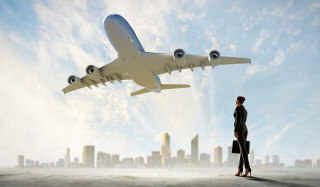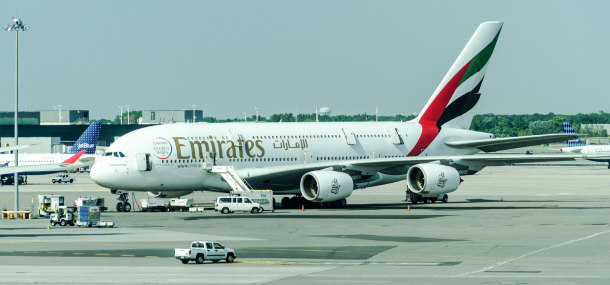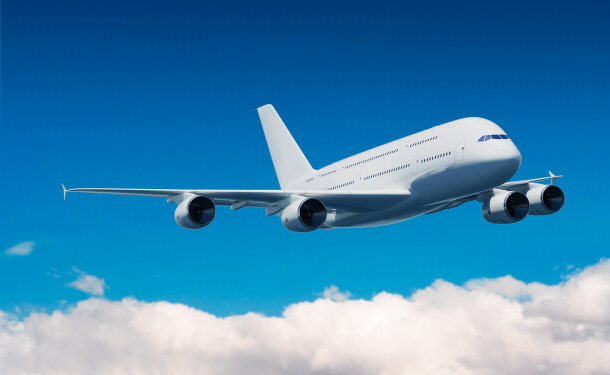Modern Aircraft - A380, 747, and the 787 Dreamliner Info
Modern Aircraft
 The commercial airline industry faces many challenges, but the recent projections
by the FAA estimate the total number of passengers to double over the next two
decades. More people flying means more congestion at airports and a growing
demand for more cost effective aircraft. Airlines are constantly looking for
solutions to keep costs down and new ways of streamlining their operations. The
most recent additions to the commercial aircraft lineup are two of the largest
airplanes ever made, and a brand new aircraft with the 787. The Airbus A380,
Boeing 747-8I, and the Boeing 787 will be the flagships of airlines for the
coming decades and are some of the most technologically advanced aircrafts
available. Besides the mammoth dimensions of the A380 and the new generation
747, Boeing offers a brand new aircraft with the 787. These new jets have state
of the art avionics as well as more powerful, energy efficient engines. One of
the most devastating factors on the overall profitability of airlines is the
rising cost of crude oil, which has seen years of steady growth. These three jets
of the future set the precedent for performance, seating capacity, and luxury
for the coming years of air travel. The commercial airline industry faces many challenges, but the recent projections
by the FAA estimate the total number of passengers to double over the next two
decades. More people flying means more congestion at airports and a growing
demand for more cost effective aircraft. Airlines are constantly looking for
solutions to keep costs down and new ways of streamlining their operations. The
most recent additions to the commercial aircraft lineup are two of the largest
airplanes ever made, and a brand new aircraft with the 787. The Airbus A380,
Boeing 747-8I, and the Boeing 787 will be the flagships of airlines for the
coming decades and are some of the most technologically advanced aircrafts
available. Besides the mammoth dimensions of the A380 and the new generation
747, Boeing offers a brand new aircraft with the 787. These new jets have state
of the art avionics as well as more powerful, energy efficient engines. One of
the most devastating factors on the overall profitability of airlines is the
rising cost of crude oil, which has seen years of steady growth. These three jets
of the future set the precedent for performance, seating capacity, and luxury
for the coming years of air travel. Airbus A380
The Airbus A380 has been in operation across the world since 2007. A380 orders
have been made by customers like Singapore Airlines, Emirates, Qantas, Air
France, Lufthansa, Korean Air, China Southern Airlines, and Malaysia Airlines.
These airlines have routes that range from medium length flights from 3 to 4
hours to intercontinental flights that stretch the plane to its maximum range
capabilities. The A380 routes take advantage of the planes versatility. The A380
has a wing span of 261.7 feet and from nose to tail measures 238 feet. The
aircraft sets new passenger comfort standards with two different seating
configurations. The two configurations make the total seating capacity vary from 500 all the
way up to 853 passengers within its double-decker fuselage. The maximum range of
the A380, that is how far can the aircraft travel on one tank of gas, is 9,756
nautical miles.
Images of the Airbus A380:


Keeping Costs Down
The A380 takes advantage of newer technologically advanced materials to make the
plane stronger and lighter. The Airbus A380 takes advantage of a laminate
material called Glare. The material is found in the pressurized portions of the
aircraft along the upper and lateral shells of the fuselage. Glare is made by
layering aluminum alloy with an alternating coating of a fiber reinforced
adhesive, making an extremely strong bond. By using Glare, weight is significantly
reduced and it helps to provide for a very damage resistant building material
that is also resistant to fatigue. By having a lighter airplane, fuel costs are
decreased which Airbus boasts they offer airlines a 15 cent lower direct
operating cost per passenger. The A380 has a unique system called Brake to
Vacate technology, that provides a helpful solution with the coming doubling of
air travelers. The system allows the flight crew and pilot to pre-select a runway
exit providing for a 30 percent lower runway occupancy time. Getting the plane
off the runway faster allows for other aircraft to land, permitting airports to
increase their maximum number of flights they can accommodate in a single day. This will be very important over the coming years when a doubling of air
travelers is expected. It is more financially practical to try to limit
runway occupancy time then to try to build all new airports.
A380 vs. 747
Boeing 747 at loading

Boeing's most recognizable plane is the 747 and the 8 is an update on a proven
design noted by Boeing as the 747-8. The so called "Queen of the Skies" is
Boeing's answer to the modern demands of the commercial air travel industry. The
seating capacity is 467 passengers, and falls short of the Airbus due to its very
limited second level. The Boeing 747 seating capacity is blown away by the
Airbus A380 because the aircraft does not use a double-decker deck configuration
across the entire length of the fuselage. The length of the new jumbo jet is
more than 250 feet which is slightly longer than the A380. The new version of
the 747 also has a commanding lead when it comes to its maximum range. The 747's
range is 11,443 nautical miles making it possible for the plane to fly all the
way from New York to Sydney nonstop. The 747 offers a cutting edge new wing
design that utilizes fully integrated raked wingtips. By using a wing design
incorporating raked wingtips, drag is decreased and the wing becomes much more
efficient. The primary benefit of raked wingtips is that the range of the
aircraft is increased. The electronics have been updated with a fly by wire
system, replacing the old systems that were less efficient and had a greater risk
of failure. A fly by wire system is a avionic system that uses electronic
messages to control the hydraulic pumps that manipulate the elevators and
ailerons. The spoilers and outboard ailerons on the new 747 make use of a fly by
wire system. In the past cables that were linked to the cockpit would be
manipulated by hydraulic pumps. Now most of the controls are electronic where
the hydraulic pumps are linked by electronic messages making the plane much more
responsive, safer, and less likely to need maintenance than the outdated
systems.
The 787 Dreamliner

Photo by hitachiota
The Dreamliner program has been marked by costly setbacks and development costs. The plane is one of the first planes to be made almost completely out of
plastics that are reinforced with carbon fiber. Carbon fiber is lighter and
stronger than aluminum. The aircraft also makes use of a single piece composite
fuselage, making it extremely strong and less likely to have damage associated
with fatigue. Boeing's newest addition is the lightest and most fuel efficient
commercial aircraft in the world. For years the 737 has dominated commercial
airline fleets, but the plane is getting rather old and aviation experts are
concerned over the structural integrity of the craft. The 787 also uses two
brand new energy efficient motors from GE and Rolls Royce, to get maximum power
using far less fuel than earlier aircraft like the 737. The 787 Dreamliner
interior promises a much more comfortable cabin with more headroom and a flying
experience similar to the early days of passenger aviation. The head designers
of the Boeing Dreamliner used the old Lockheed Constellation for their design
inspiration. They wanted to bring back the romanticized past of air travel. The aircraft has been struggling to get to market however due to some electronic
system failures which have cost Boeing billions in concessions to airlines.
The 787 deliveries have been plagued with problems which have been damaging to
Boeing's reputation. Many of the airlines who preordered the 787 have cancelled
their orders, but many new orders have saved Boeing from a very disastrous
profitability outcome. The 787 Dreamliner cost varies from $146-151.5 million.
Point-to-Point vs. Hub-and-Spoke
The three aircrafts mentioned above are designed around two very different
flight plan arrangements. The larger planes like the A380 and the 747-8I are
better designed for a hub and spoke flight, where passengers fly to a central hub
before heading to their ultimate destination. In the U.S. it is most likely that
a passenger will make use of the point-to-point system domestically, and then
shift to a hub-and-spoke system when flying internationally. In Asia this flight
plan design is most common. Hub-and-spoke routes require less routes to serve
the entire network of locations, allow for more flights to flown along each
route, and utilize the full capacity of the airplanes. Point-to-point systems
minimize connections and travel time. This means less opportunities to lose
luggage and much more streamlined flight paths. Also each destination is not
dependent on the central hub which allows for reconfiguration of flight plans,
due to bad weather or delayed flights. A point-to-point arrangement is what the
787 Dreamliner was designed around, and is what the U.S. airline transport
network is designed around. The A380 and the 747-8I were designed with a
hub-and-spoke transport network in mind.
Looking to the future the three planes that will dominate the skies are the
A380, the 747-8I, and the 787 Dreamliner. These planes all have one central
component in common in that they make use of lightweight materials to increase
the overall operational efficiency. As crude oil costs increase every year,
the cost of flying will always be a struggle and airlines will be fighting to
keep costs down long
into the future. By making use of state of the art aircraft and limiting the
number of flights made, costs can be kept down and air travel will continue to
be a practical and safe travel option.
Airplanes
15 Weird Reasons Airplane Crashes Have Occurred
Modern Aircraft - A380, 747, and the 787 Dreamliner Info |